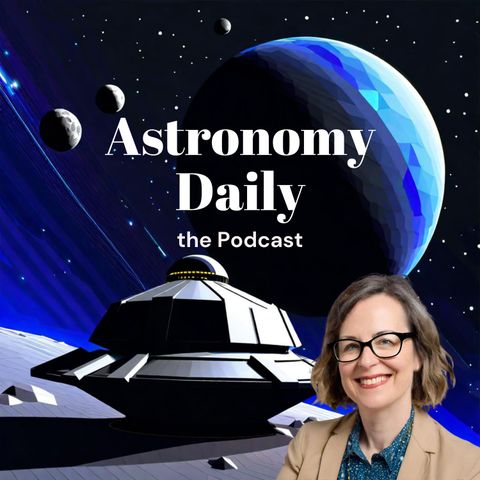S03E106: Black Hole Mysteries & James Webb's Frontier

Descarga y escucha en cualquier lugar
Descarga tus episodios favoritos y disfrútalos, ¡dondequiera que estés! Regístrate o inicia sesión ahora para acceder a la escucha sin conexión.
Descripción
Welcome to Astronomy Daily, your go-to Podcast for all the latest updates in the world of space and astronomy. I'm your host, Anna. Today we have some fascinating news stories...
mostra más- Groundbreaking Study on Black Holes Known as Kugelblitze: Recent research challenges the theory that these extreme objects, formed solely from light, can exist. Scientists delved into quantum mechanics and general relativity to understand why these objects can't form, even under the most extreme conditions. Physicists Jose Polo Gomez and Alvaro Alvarez Dominguez found that the Schwinger effect would occur at such high levels of concentrated light, disrupting the formation of a kugelblitz. Their calculations show that even with the most intense lasers on Earth, we wouldn't come close to the level of energy required. This revelation puts constraints on some cosmological models and reinforces that kugelblitze are impossible in our universe.
- - James Webb Space Telescope's Potential: The James Webb Space Telescope (JWST) has been a hot topic since its launch, and for good reason. Its exceptional sensitivity to infrared light allows it to peer farther back in time and space than any telescope before it. This means JWST could potentially detect some of the earliest galaxies that formed after the Big Bang. Moreover, JWST's observations could provide critical data on dark matter and dark energy. In essence, the James Webb Space Telescope isn't just another tool for stargazing; it's a time machine aimed at the cosmos.
- - Challenges Faced by the Gaia Space Telescope: The ESA's Gaia space telescope encountered significant challenges in its 11th year of operation. Struck by a micrometeoroid and experiencing a camera malfunction, Gaia faced setbacks that led to the transmission of gigabytes of junk data back to Earth. However, the mission team at ESA quickly adjusted the telescope software and fine-tuned its optics, resulting in Gaia now sending back better quality data than ever before. Despite these challenges, Gaia remains operational and continues to provide valuable data.
- - ESA's Ramses Mission to Study Asteroid Apophis: ESA's Ramses mission is gearing up for an exciting journey set for launch in 2028. This mission will rendezvous with the asteroid 99942 Apophis as it makes an exceptionally close flyby of Earth in 2029. Ramses aims to capture transformations in real time, providing invaluable data for scientists. This joint effort between ESA and NASA exemplifies the international collaboration required for planetary defense and marks a significant milestone in our ability to react quickly to celestial hazards.
- Don't forget to visit our website at astronomydaily.io to sign up for our free daily newsletter and stay updated with the latest space news. Follow us on social media at AstroDailyPod on Facebook, X, YouTubeMusic, and TikTok to join our community of stargazers and space enthusiasts. Until next time, keep looking up and stay curious about the universe.
- Become a supporter of this podcast: Support Astronomy Daily.
- www.bitesz.com
Información
| Autor | bitesz.com |
| Organización | bitesz.com |
| Página web | www.bitesz.com |
| Etiquetas |
Copyright 2024 - Spreaker Inc. an iHeartMedia Company

Comentarios